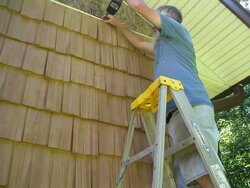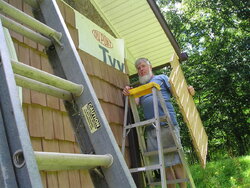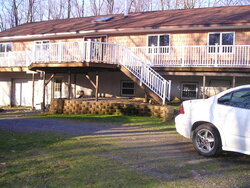The issue is that the A/C unit is in the attic. There is plenty of insulation on the floor--I put it there myself. I believe that the A/C installer put in the fan in the belief that it would keep the unit working better. I am not so sure about the validity of that point, but I will say that I have noticed buckling of the shingles this last year which may or may not have anything to do with the fan's failure.Firebroad,
You could also consider taking this opportunity to invest in some energy upgrades for the attic. The payoff period can be pretty short with air sealing and insulating.
You could seal off the attic and have foam sprayed between the rafters. This really reduces the summer load on AC and heating load too.
The roofing company's guarantee is for the next 29 years. They have so far given me no problems with coming out and rectifying any defects that have come up. They would stand to gain nothing from the replacement of the fan, as they would not be the ones doing the work. They may suggest opening the sofits so that the ridge vents work better, but I will know more on Friday. At the moment, I am more interested in getting that hole fixed before we have a downpour!




